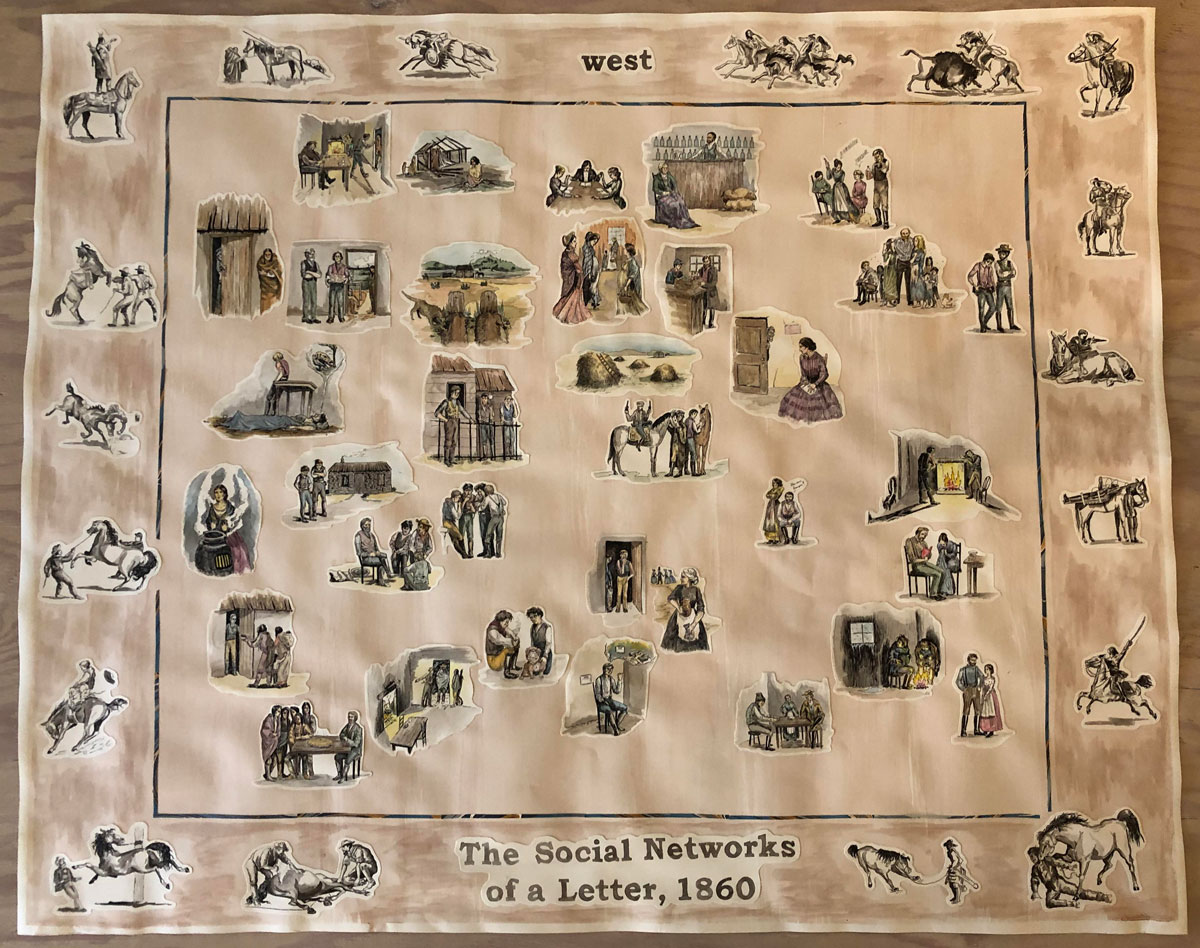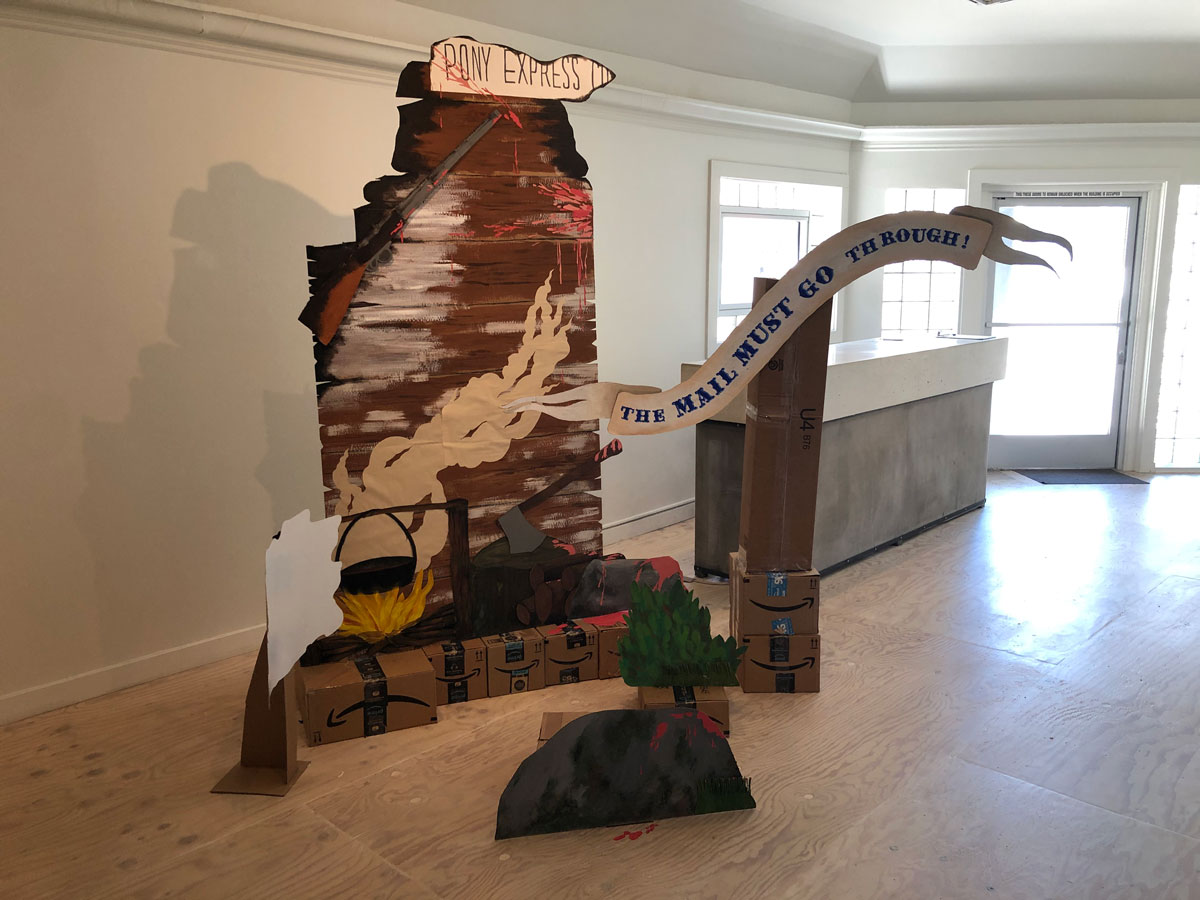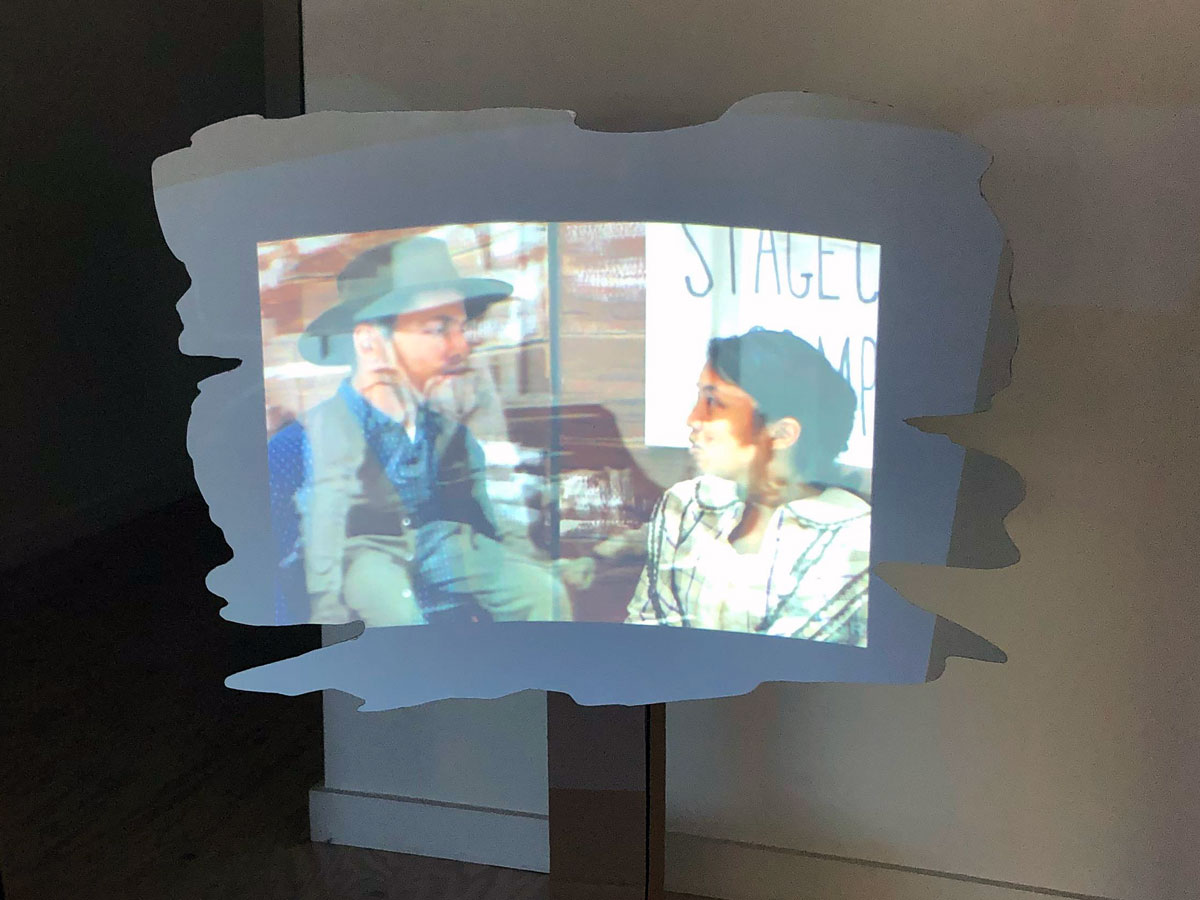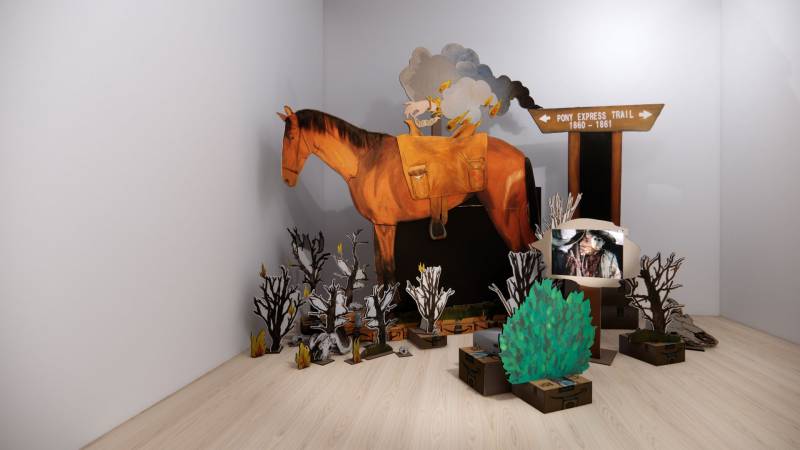In a world reliant on digital technology, it’s easy to forget the extremely analog materials we use to contain and distribute those high-tech goods to homes all over the world. That is: paper and cardboard. In recent months, boxes and packages containing devices to ease our socially distanced lives. And it’s not just what’s inside that matters; in a recent poll conducted by the U.S. Postal Service, 65% of respondents said simply receiving mail lifts their spirits.
The speedy delivery of messages and goods is a technology unto itself, a fact well known to Oakland artist and educator Christina Corfield, who has spent years researching the history and mythology of the proto-U.S. Postal Service, the Pony Express.
Corfield’s mixed-media work was recently part of Dreams and Diversions: Images of America, a virtual group exhibition with artists Hampton Boyer and Sophie Treppendahl at Oakland’s Johansson Projects. Each artist explores the concept of home or depictions of the American imagination, and Corfield’s works on paper, painted cardboard installations and projected video pieces provide slyly annotated visual histories of the Pony Express. It’s part of her long-term project to chart the genealogy of the United States’ telecommunications infrastructure through the making of art.

Because of its outsize presence in film and television retellings of American history, most people don’t know the Pony Express only existed for 18 months. In practice, it provided a relay mail service that delivered business documentation, newspapers and other media by mail courier and horse for during 1860 and 1861. But there was also a network of people—immigrants, Native Americans, women, and children—involved in keeping the service fully functional, people who rarely make it into those retellings.
In Dreams and Diversions, Corfield’s detailed drawing The Social Networks of a Letter, 1860 illustrates the Express’ West and East-coast networks. The horse and its rider frame depictions of a multitude of interactions between riders, families, individuals and workers. While there is no visible web that connects them, Corfield allows the viewer’s eyes to piece the interactions together, resulting in an array of potential stories along the route.

Corfield’s most recent work, three installations all titled Pony Players’ Review (The Infrastructure), are each made up of dozens of paintings on cardboard. Life-size renderings of a horse, a campfire and telegraph office become backdrops for imagined encounters along the Express’ central route. Projectors, supported by Amazon delivery boxes, play videos depicting the 19th-century messaging service layered with re-enactments Corfield re-cast to address the lack racial and gender diversity in those earlier representations.
Corfield’s attention to detail extends to her material choices. Her extensive use of cardboard is part of a larger commentary on the colorism assigned to even inanimate objects—like paper goods. During our conversation, she pointed out that white paper is often associated with literature and official documentation, while brown paper is purely functional, a utility to be discarded or recycled. Using Amazon boxes as a material, Corfield draws a direct line between a former infrastructure and a present one. Today, Amazon delivers on the expediency once promised by the Pony Express.
Re-enactments are a key element in Corfield’s approach to social and historical commentary. Unlike Pony Players’ Review, in which we see a new cast of characters mimicking old roles, Corfield’s earlier work uses few lines, simplified dialogue and plays with the repetition of actions. In the 2009 video Hot Circuit, she created the look and feel of a vintage film by outfitting her actors in black-and-white costumes and painting their skin silver. The repetitions are reminiscent of GIFs, allowing viewers to analyze actions on a short loop that alludes to but doesn’t fully explain a larger narrative.

While film and video play a tremendous role in her practice, Corfield relies on paper technologies to facilitate what she calls “thinking through making.” Working with her hands, she physically interprets ideas, historical events and concepts through drawing, painting and sculpture. In her 2019 piece A Brief History of Computers, Corfield uses the thaumatrope, an optical toy with two different images on the sides of a disc to showcase the work of women written out of that history. When the strings of the thaumatrope are twisted, the rapidly flipping disc creates the optical illusion of the two images becoming one. For Corfield, the toy was a perfect analog to computer systems running on binary code.
“The processes of making, of craft, can open up an understanding of historical objects,” Corfield says. “I make them as a way of learning about these objects while feeling free to change things about them to make them relevant and connect, in some conceptual way, to issues important today.”



